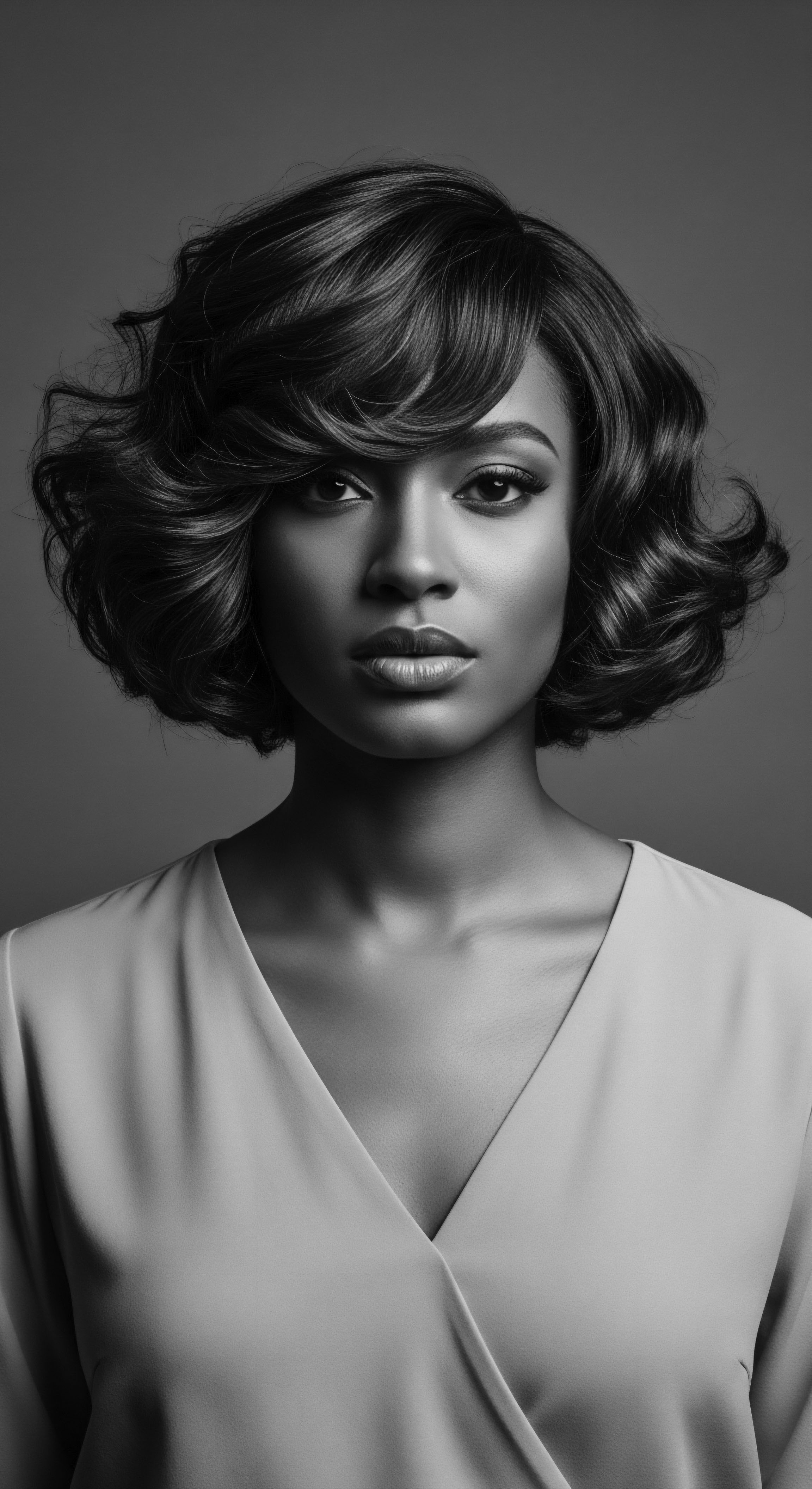
Fundamentals
The understanding of ‘Hair Tools’ begins with a simple, yet profound recognition ❉ these are the instruments, both ancient and contemporary, that human hands have employed to care for, adorn, and transform the strands that grow from our scalps. At their most basic, hair tools represent an extension of our innate desire to engage with our physical selves and present our identity to the world. They are not merely objects; they are conduits for connection, vessels of ritual, and quiet chroniclers of human ingenuity across civilizations. For textured hair, in particular, the significance of these tools transcends simple utility, reaching into the very core of cultural survival and ancestral memory.
From the earliest communal gatherings, hands themselves were the primordial hair tools, separating, twisting, and sculpting hair into forms that conveyed status, age, or spiritual belief. As communities evolved, so too did the implements used for hair care, fashioned from the bounty of the earth around them. The initial meaning of these implements was rooted in practicality—detangling, cleaning, or securing hair. Over time, however, their purpose deepened, becoming interwoven with expressions of heritage and the very definition of communal well-being.

The Earliest Implementations of Care
Long before the advent of intricate designs or specialized materials, the fundamental act of managing hair relied upon the simplest of tools. A smooth stone might have served to press, a sharpened stick to part, or the very fingers of a loved one to braid. These elemental forms of hair tools underscore a universal human practice of self-adornment and communal grooming. In many ancient African societies, the act of hair styling was not a solitary endeavor but a cherished social ritual, a time for sharing stories and wisdom, where the hands of a stylist became the most significant tools of all.
Hair tools, at their core, represent the enduring human desire to shape and celebrate identity through the care of our strands.
The earliest combs, often crafted from wood, bone, or ivory, were among the first specialized hair tools, appearing thousands of years ago in African civilizations. These early implements were not just for detangling; they served as symbols of status, affiliation, and spiritual connection. Their very construction often reflected the deep reverence for nature and the spiritual world held by the communities that created them, with handles adorned with figures or motifs that spoke volumes about the wearer’s place in the cosmos.

Elemental Forms and Functions
- Combs ❉ These early instruments, often with wide teeth, aided in separating and ordering textured hair, a crucial step for maintaining health and preparing for intricate styles.
- Picks ❉ Designed to lift and volumize, picks allowed for the creation of grand, sculptural styles that defied gravity, signifying prosperity and vitality.
- Fingers ❉ The most primal and enduring tools, human fingers continue to be essential for gentle detangling, precise parting, and the creation of complex braided or twisted patterns in textured hair.
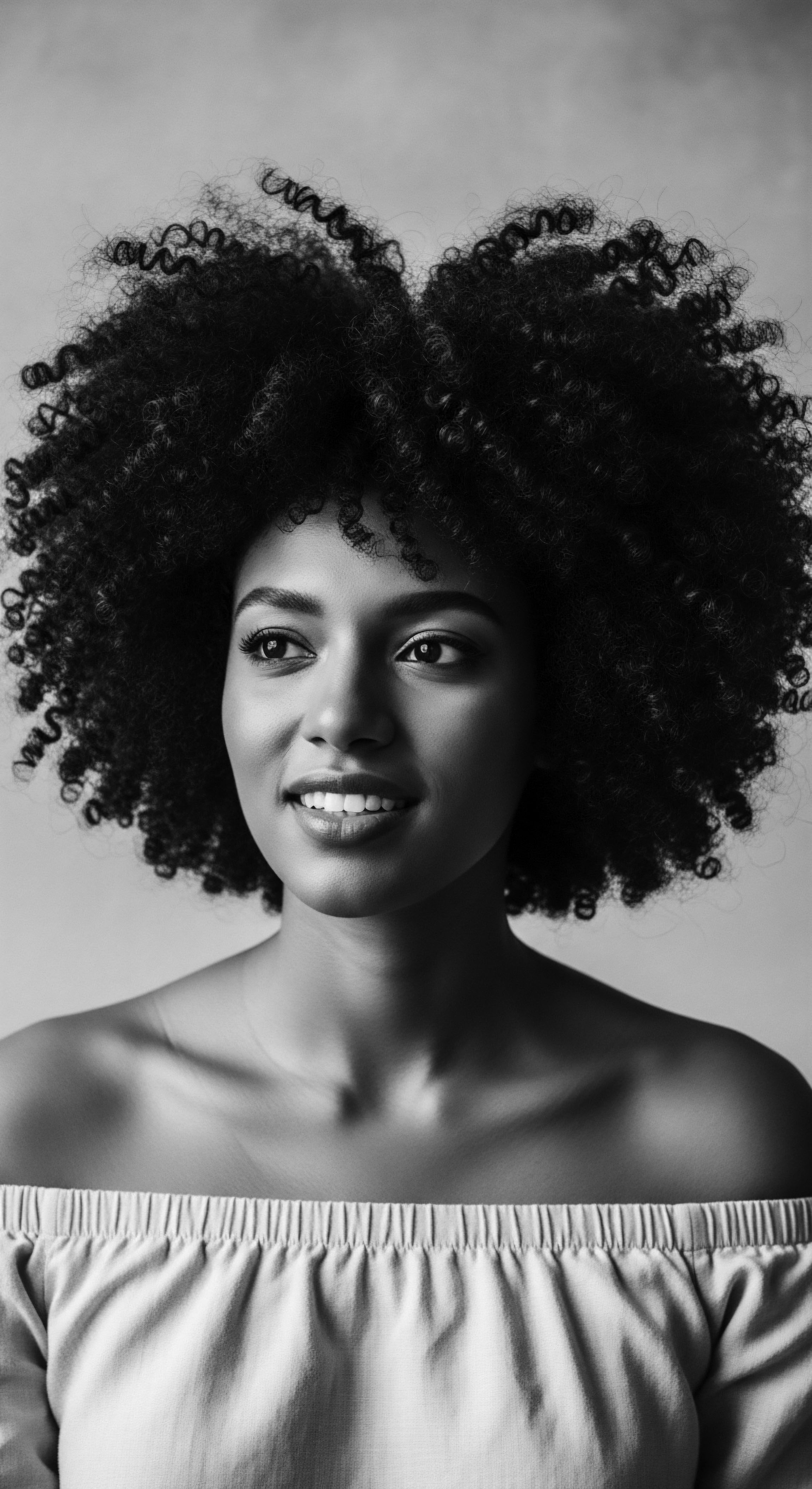
Intermediate
Moving beyond the foundational understanding, the intermediate meaning of ‘Hair Tools’ expands to encompass their role in the cultural evolution of hair care, particularly within the rich heritage of textured hair. These instruments, from simple implements to more complex devices, have consistently mirrored societal shifts, technological advancements, and, most powerfully, the resilience and adaptability of Black and mixed-race communities across the diaspora. Their significance transcends mere function, embodying a profound connection to identity, communication, and collective memory.
The journey of hair tools reveals a continuous dialogue between the practical demands of hair care and the expressive potential of hair as a cultural canvas. As ancestral practices traveled across continents, often under duress, the tools adapted. Ingenuity became a hallmark, as individuals crafted implements from available materials, transforming necessity into an act of preservation. This adaptive spirit allowed for the continuity of hair traditions, even when traditional resources were scarce.

The Evolution of Tools and Cultural Expressions
The transition from rudimentary implements to more refined hair tools marks a significant period in the heritage of textured hair care. In pre-colonial African societies, the development of specialized combs and styling aids was not merely about aesthetic enhancement; it was deeply intertwined with social structure and spiritual beliefs. These tools facilitated styles that communicated marital status, age, social rank, and even spiritual affiliations. The precision required for such elaborate styles necessitated tools that could manage the unique properties of highly coiled and coily hair textures.
Hair tools serve as tangible links to a rich cultural heritage, reflecting centuries of adaptation, resistance, and artistic expression within textured hair traditions.
The historical context of hair tools within Black communities also bears the indelible marks of adversity and resistance. During the transatlantic slave trade, enslaved Africans were often stripped of their traditional tools and forced to shave their heads, a deliberate act designed to erase their identity and cultural ties. Yet, even under such brutal conditions, the spirit of hair care persisted. Enslaved individuals ingeniously fashioned combs from wood or bone and utilized natural oils and animal fats to protect their hair.
The act of braiding, often using rudimentary tools, became a quiet yet potent act of defiance, a means of preserving identity and even encoding messages for escape. This historical example powerfully illuminates the Hair Tools’s connection to textured hair heritage and ancestral practices. As noted by historians and anthropologists, cornrow patterns, for instance, were reportedly used in Colombia to create maps and directions for those seeking freedom from plantations (Afriklens, 2024). This demonstrates how even the most basic hair tools, alongside the human hand, became instruments of survival and liberation.
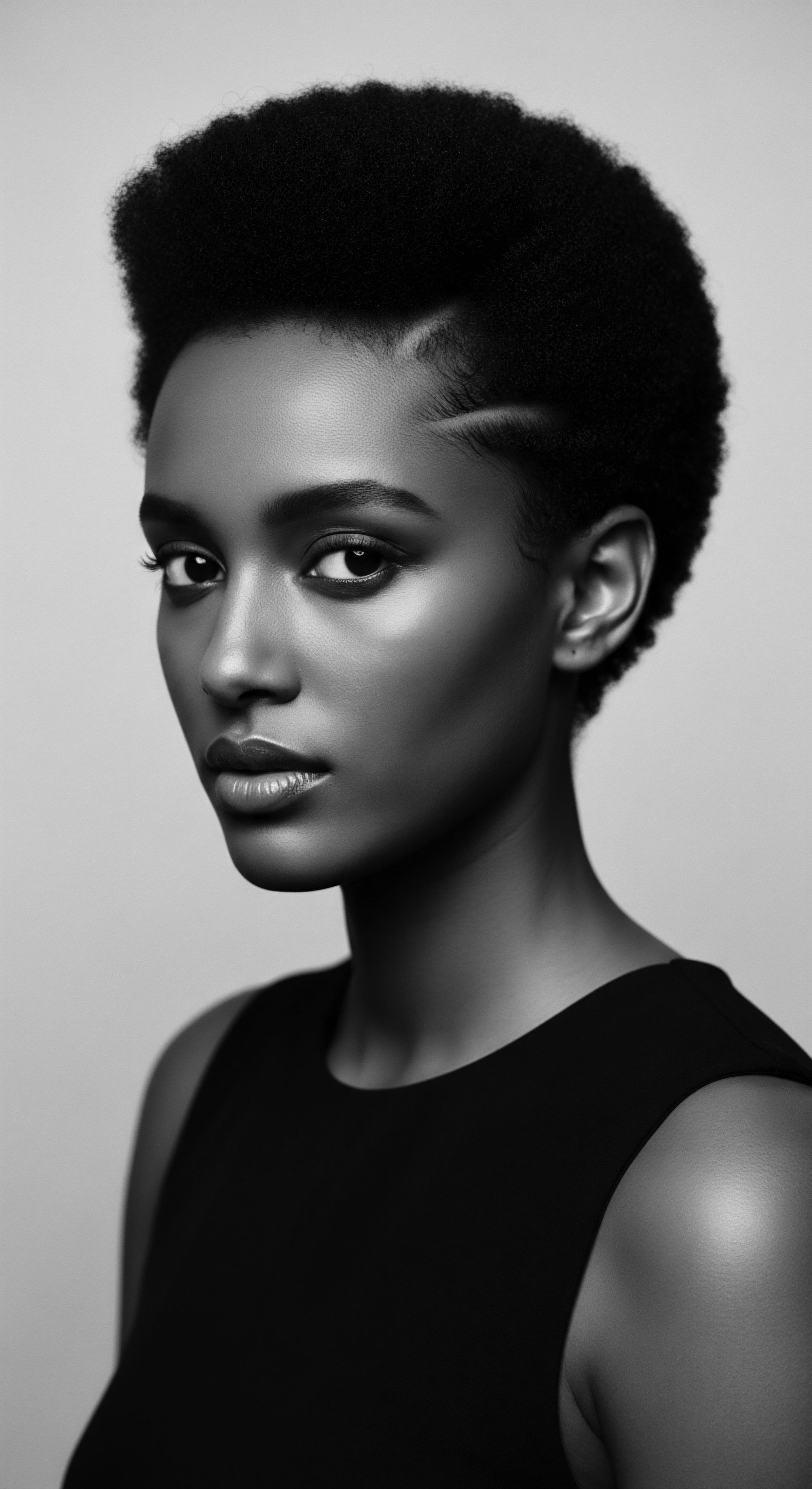
Innovations Born of Necessity and Resilience
- Hot Combs ❉ While the concept of heated styling tools existed in Europe, the hot comb gained significant popularity and adaptation within the African-American community in the late 19th and early 20th centuries. It provided a method for temporarily straightening hair, a practice often linked to societal pressures for assimilation into Eurocentric beauty standards, but also offered new avenues for styling and self-expression.
- Hair Weaving Tools ❉ The development of hair weaving techniques, particularly the sew-in method by Christina Jenkins in the 1950s, transformed styling possibilities for Black women, allowing for greater versatility and protective styling. These innovations, facilitated by specialized needles and threads, represented a significant step in expanding the range of hair expression.
- Afro Picks ❉ The resurgence of the Afro pick during the Civil Rights and Black Power movements of the 1960s and 1970s symbolized a powerful reclamation of Black identity and pride. These long-toothed combs were not merely functional; they became political emblems, worn as statements of self-acceptance and defiance against oppressive beauty norms.
The narrative surrounding these tools reveals how they are not static objects but dynamic artifacts, each with a story embedded in the collective experience of textured hair. They reflect the continuous adaptation and innovation that has allowed traditional practices to persist and evolve, connecting generations through shared rituals of care and adornment.

Academic
The academic definition of ‘Hair Tools’ transcends a mere cataloging of implements, positioning them as socio-cultural artifacts, technological extensions of human intent, and biological facilitators of scalp and hair health, all deeply contextualized within the ancestral and contemporary experiences of textured hair. This scholarly interpretation recognizes hair tools as active agents in the construction of identity, the negotiation of power dynamics, and the preservation of heritage across the African diaspora. Their meaning is not singular but a complex interplay of material science, anthropological significance, and psychological impact, particularly as they relate to the unique structural properties of Black and mixed-race hair.
From a rigorous academic perspective, hair tools are the material culture through which human societies engage in the complex process of trichological management and aesthetic expression. They are the instruments that mediate the interaction between human hands, environmental factors, and the intrinsic biological characteristics of hair fibers. For textured hair, which exhibits diverse curl patterns ranging from loose waves to tightly coiled strands, the design and application of these tools hold particular scientific and cultural relevance. The very geometry of a wide-tooth comb, for instance, is a direct response to the helical structure of coily hair, minimizing breakage and preserving the integrity of the hair shaft during detangling.
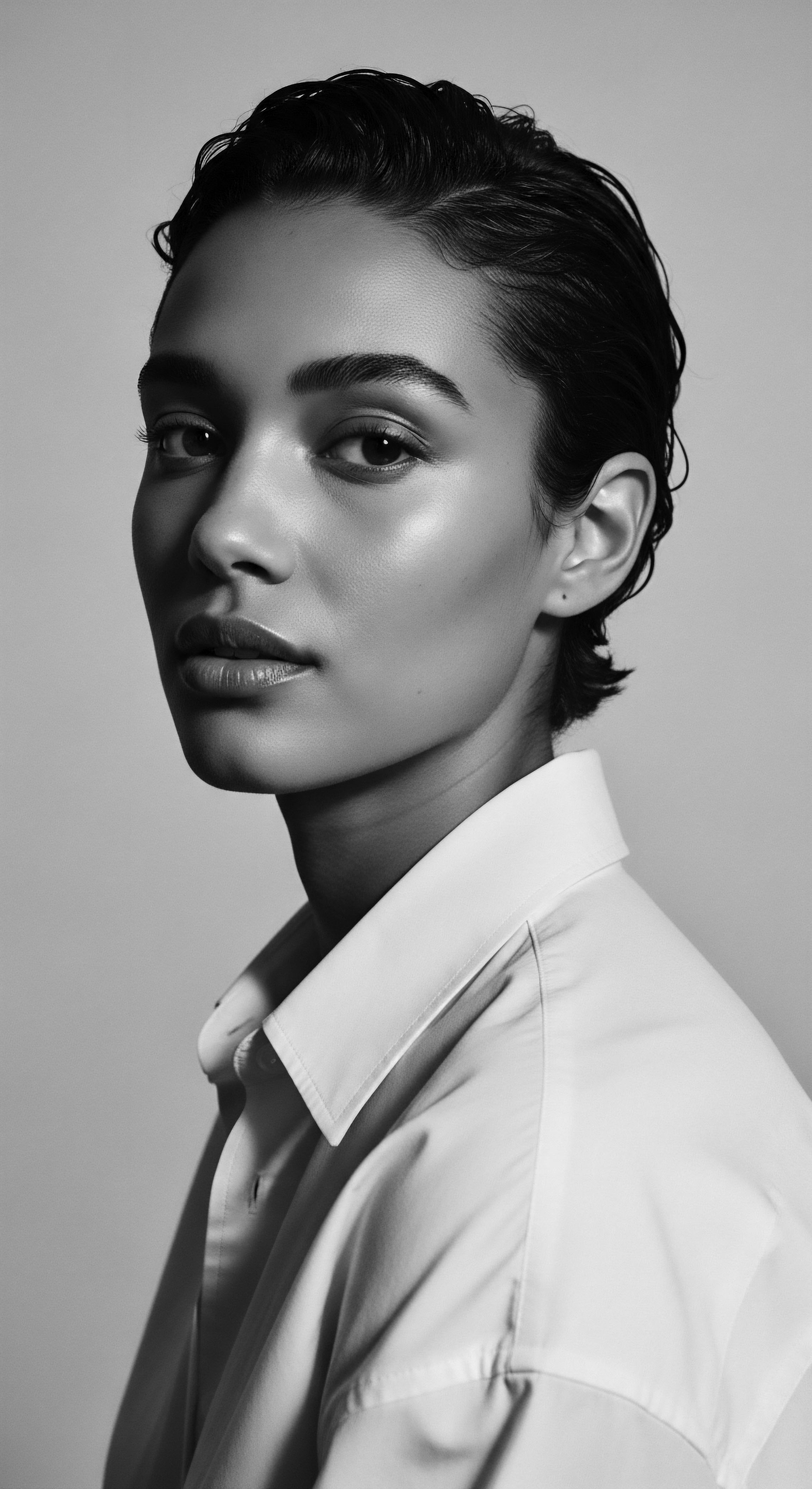
The Anthropological and Sociological Delineation of Hair Tools
Anthropologically, hair tools serve as tangible markers of cultural practice and social cohesion. Their forms, materials, and ceremonial uses provide insights into the values, beliefs, and organizational structures of various societies. In pre-colonial African societies, the creation and use of hair tools were often communal activities, reinforcing social bonds and transmitting knowledge across generations.
The tools themselves, often adorned with symbolic carvings, functioned as repositories of collective memory and spiritual connection. The act of styling hair, facilitated by these tools, was a ritualized practice, reflecting not only aesthetic ideals but also a profound connection to the divine and ancestral realms.
Hair tools are not inert objects; they are dynamic cultural artifacts, imbued with the narratives of identity, resilience, and resistance that define the textured hair journey.
Sociologically, the evolution and application of hair tools within Black and mixed-race communities reveal profound narratives of adaptation and resistance against hegemonic beauty standards. The forced assimilation during the transatlantic slave trade, which often involved the shaving of hair, aimed to strip individuals of their cultural identity. In response, enslaved Africans and their descendants repurposed everyday objects or crafted new tools to maintain traditional hairstyles, transforming acts of grooming into acts of quiet rebellion.
The ingenuity displayed in fashioning combs from scavenged materials or using hot knives and stove-heated forks as early straightening implements speaks to an enduring determination to preserve selfhood. This period highlights a crucial socio-historical aspect of hair tools ❉ their capacity to become instruments of cultural survival and self-determination even under extreme oppression.
A particularly poignant historical example illustrating the profound connection between hair tools and the experience of Black women is the development and widespread adoption of the Hot Comb. While earlier versions of heated tools existed, the hot comb, popularized by pioneering Black entrepreneurs like Madam C.J. Walker and Annie Malone in the early 20th century, became a ubiquitous item in Black households. This tool offered a means for Black women to straighten their hair, a practice that, while providing versatility and protection for some, also became entangled with societal pressures to conform to Eurocentric beauty ideals for economic and social mobility.
As Kerry Riley, an African American studies professor at the University of the District of Columbia, recounts, the memory of his mother and sister bonding over the use of the hot comb, despite the associated discomfort, reveals the deep personal and communal significance of these tools, illustrating how they became central to familial care rituals and identity formation (Riley, as cited in Folklife Magazine, 2022). This case illuminates the complex, often dual, role of hair tools in the Black experience—simultaneously a source of empowerment and a reflection of imposed societal norms.

The Biomechanical and Material Science of Hair Tools
From a biomechanical perspective, the efficacy of a hair tool is contingent upon its interaction with the unique physical properties of textured hair. The high density of disulfide bonds and the elliptical cross-section of coily hair lead to its characteristic curl and propensity for tangling. Tools designed with wide-spaced, smooth teeth, such as the traditional Afro pick or specialized detangling combs, minimize friction and reduce mechanical stress on the hair shaft, thereby preventing breakage and preserving cuticle integrity. The material composition of hair tools also plays a critical role.
Traditional materials like wood or bone, often porous, could absorb natural oils, potentially distributing them during styling and contributing to hair health, a subtle yet significant interplay between tool and treatment. Modern innovations in polymers and ceramics aim to reduce heat damage and static, reflecting a scientific understanding that often validates the protective principles inherent in ancestral practices.
The ongoing research into the optimal design of hair tools for textured hair highlights the intricate relationship between engineering principles and biological realities. For instance, studies on hair carving tools demonstrate the need for precise blade adjustments to achieve specific aesthetic outcomes, underscoring the technical sophistication required for manipulating diverse hair textures. This level of specificity in tool design speaks to the nuanced understanding required to work with hair that possesses a wide range of curl patterns and densities.

Psychological and Societal Implications
Beyond their physical utility, hair tools carry profound psychological and societal implications. The choice of a particular tool or the adoption of a specific styling practice can be a powerful act of self-expression, a declaration of cultural affiliation, or a form of political commentary. The ‘black fist’ Afro comb, for example, became a potent symbol of the Black Power movement, directly linking a grooming implement to a broader struggle for civil rights and racial pride. This transformation of a utilitarian object into a political emblem underscores the deep symbolic capacity of hair tools within the context of collective identity formation.
The debates surrounding the use of certain hair tools, such as chemical relaxers or hot combs, also reveal the enduring tension between cultural authenticity and societal pressures. While these tools offered avenues for conformity and perceived professional acceptance, their long-term use could lead to hair damage and perpetuate a beauty standard that marginalized natural textured hair. This complex relationship illustrates how hair tools are not neutral objects but are embedded within historical power structures and ongoing dialogues about beauty, race, and self-acceptance.
The academic examination of hair tools thus encompasses their biological interaction with hair, their historical evolution as cultural artifacts, and their enduring role in shaping individual and collective identities, particularly within the dynamic and resilient heritage of textured hair. This holistic perspective reveals the profound and multifaceted meaning of these seemingly simple objects.
- Cultural Communication ❉ In many West African communities, hair, and by extension the tools used to style it, served as a sophisticated medium for communication, conveying spiritual beliefs, social status, and ethnic identity.
- Resistance and Resilience ❉ During periods of enslavement and colonization, hair tools, or makeshift alternatives, became instruments of resistance, allowing individuals to maintain cultural practices and even encode messages of escape within their hairstyles.
- Economic Empowerment ❉ The development and marketing of hair tools and products by Black entrepreneurs, such as Madam C.J. Walker, created significant economic opportunities within Black communities, challenging existing industries and building wealth.
- Identity Reclamation ❉ The resurgence of specific hair tools, like the Afro pick, during the Civil Rights and Black Power movements, marked a powerful shift towards embracing natural hair and reclaiming a positive Black identity, moving away from Eurocentric beauty norms.
| Tool Category Detangling Implements |
| Traditional/Ancestral Manifestation Wide-tooth combs crafted from wood, bone, or natural materials, used gently to separate strands and prevent breakage. |
| Contemporary Evolution & Significance Modern wide-tooth combs and specialized detangling brushes (e.g. flexible bristles), designed with advanced materials to minimize friction and protect hair integrity. |
| Tool Category Styling & Shaping Aids |
| Traditional/Ancestral Manifestation Fingers, braiding sticks, and simple pins used for intricate cornrows, twists, and sculptural updos. |
| Contemporary Evolution & Significance Advanced braiding tools, specialized sectioning clips, and innovative curling/straightening irons tailored for various textured hair types, offering versatility while aiming for minimal heat damage. |
| Tool Category Protective & Adornment Elements |
| Traditional/Ancestral Manifestation Headwraps, beads, cowrie shells, and natural fibers woven into hairstyles for protection and cultural expression. |
| Contemporary Evolution & Significance Silk bonnets, satin pillowcases, hair extensions, and decorative hair accessories that continue the tradition of protection and aesthetic enhancement, often with contemporary designs. |
| Tool Category This comparison highlights the continuous lineage of hair care practices, where modern tools often echo the fundamental needs and cultural expressions first addressed by ancestral methods. |
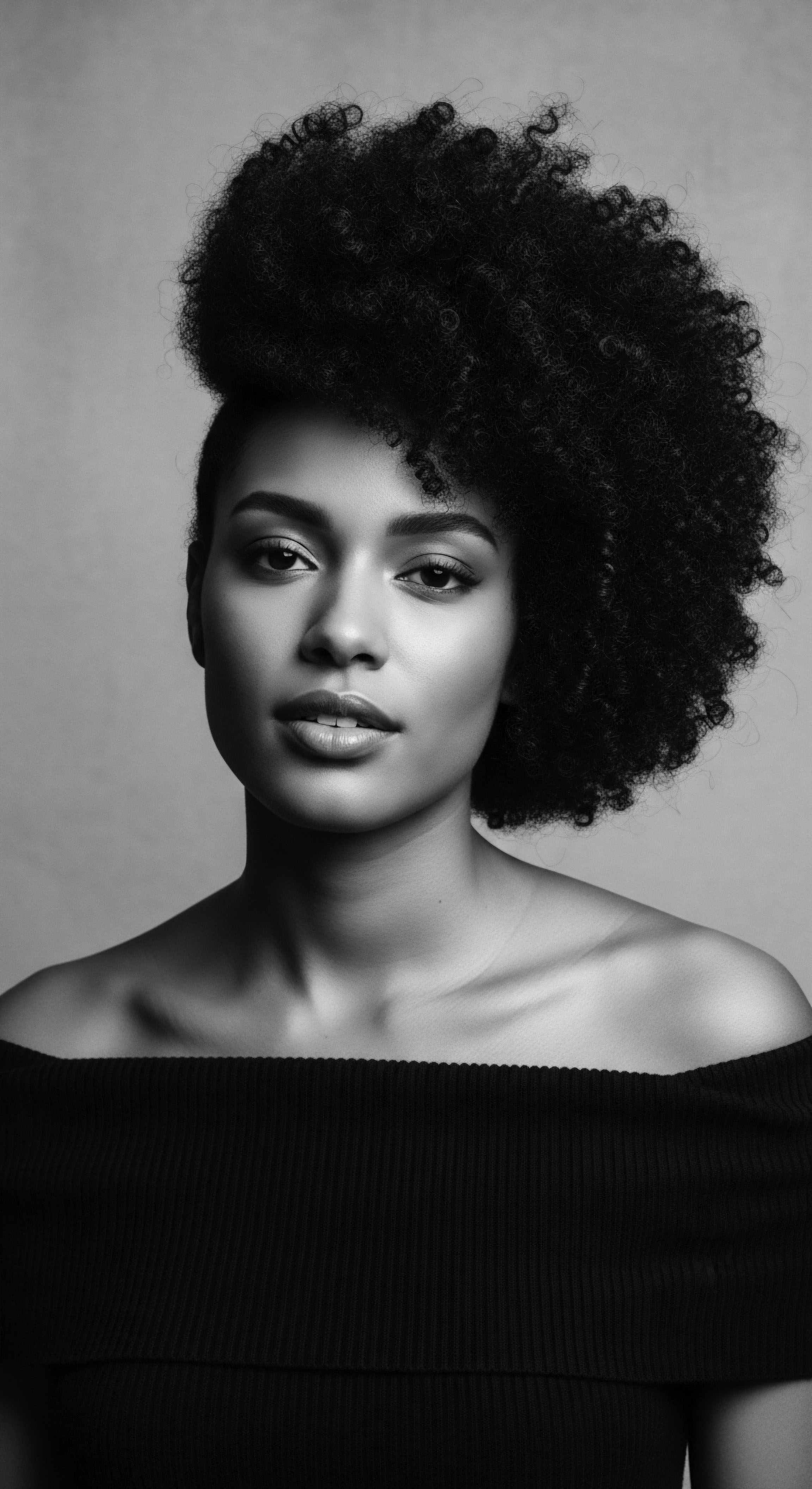
Reflection on the Heritage of Hair Tools
The journey through the realm of Hair Tools, particularly when viewed through the lens of textured hair heritage, reveals a narrative far richer than mere functional description. It is a profound meditation on human connection, ingenuity, and the enduring spirit of identity. These instruments, whether fashioned from the simplest elements of nature or engineered with sophisticated modern materials, are not simply inert objects. They are imbued with the echoes of ancestral hands, the whispered wisdom of generations, and the resilient spirit of communities who have consistently found ways to celebrate their unique beauty against all odds.
The story of Hair Tools is a testament to the Soul of a Strand ethos—the recognition that each curl, coil, and wave carries within it a deep historical memory. The tools used to care for these strands become extensions of this memory, facilitating rituals that nourish not only the hair but also the spirit. They represent the tender thread that binds the past to the present, a continuous lineage of care, creativity, and self-affirmation. From the earliest communal braiding sessions, where stories were shared and bonds were strengthened, to the modern-day embrace of natural hair, the tools have remained central to these deeply personal and collective expressions.
Every hair tool holds a whisper of the past, a testament to enduring care and the celebration of ancestral beauty.
In the hands of those who understand and honor textured hair, a hair tool transforms from a simple implement into a vessel of ancestral wisdom. It allows for the continuation of practices that prioritize hair health, protection, and authentic self-expression. This appreciation extends beyond the physical object, encompassing the knowledge of its proper application, the understanding of its historical context, and the reverence for the traditions it represents. The choices we make regarding our hair tools today are thus not isolated decisions; they are acts that either reinforce or diminish this rich heritage.
The exploration of Hair Tools prompts us to consider the profound implications of our grooming rituals. Are we simply styling hair, or are we participating in a centuries-old conversation about identity, resilience, and the sacredness of our crowns? The enduring significance of these tools lies in their capacity to connect us to a legacy of beauty, strength, and cultural pride.
As we look towards the future, the evolution of hair tools will undoubtedly continue, yet their deepest meaning will forever be rooted in the tender care, communal bonds, and unyielding spirit of textured hair heritage. The unbound helix of our hair, forever reaching towards new expressions, will always carry the profound imprint of the tools that helped shape its journey.
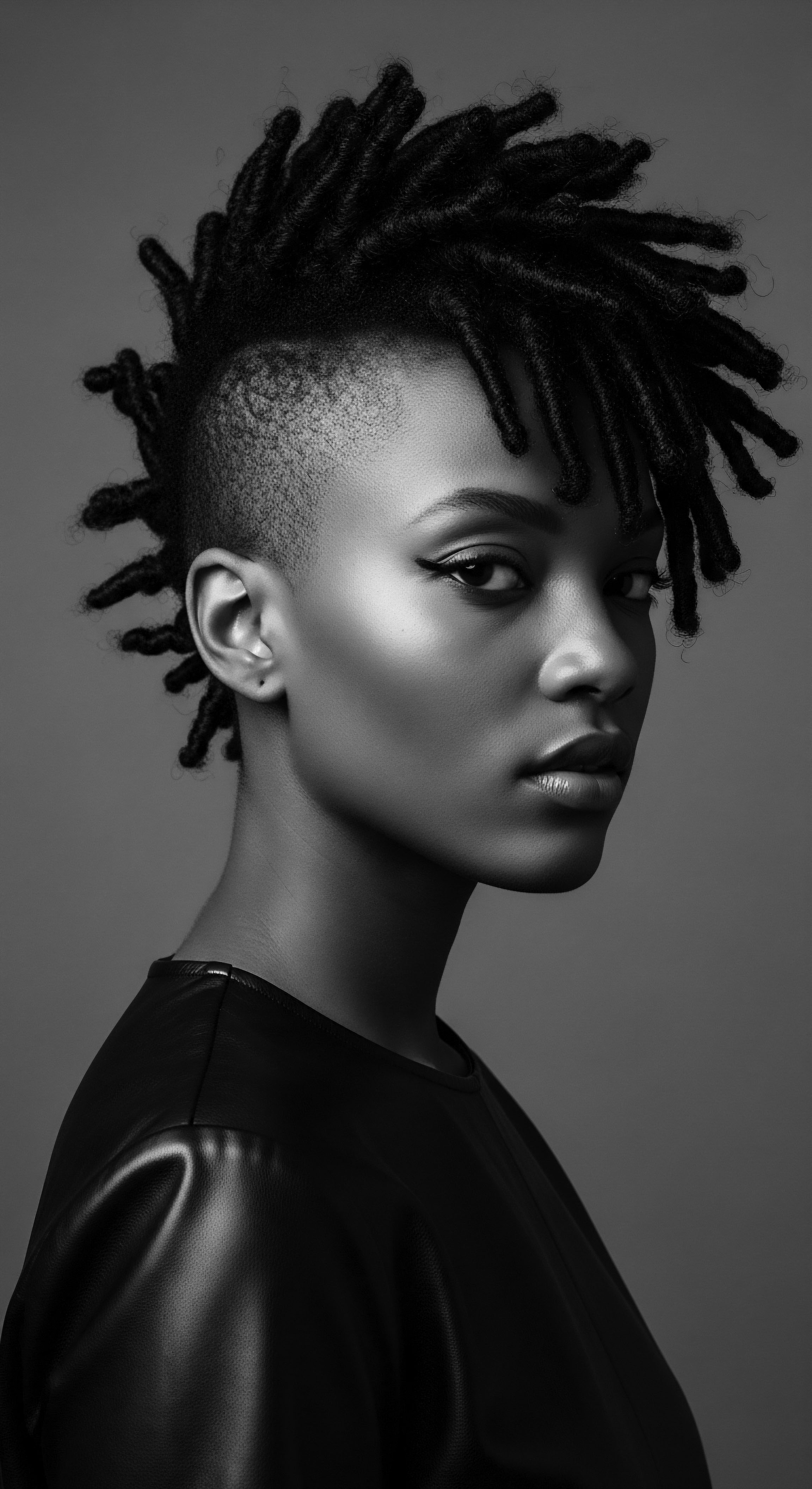
References
- Afriklens. (2024). African Hairstyles ❉ Cultural Significance and Legacy.
- BLAM UK CIC. (2022). The history of Black Hair.
- Davenport, K. (2022). Heavy is the Head ❉ Evolution of African Hair in America from the 17th c. to the 20th c. The Library of Congress.
- Oforiwa, A. (2023). The History and Culture of African Natural Hair ❉ From Ancient Times to Modern Trends. AMAKA Studio.
- Prose. (2020). The Evolution of Black Hair Care.
- University of Salford Students’ Union. (2024). The Remarkable History Behind Black Hairstyles.
- The Fitzwilliam Museum. (n.d.). Origins of the Afro Comb.
- Refinery29. (2021). The Evolution Of The Natural Hair Movement.
- Synergi Hair. (2024). Afro Combs ❉ A Timeless Emblem of Black Identity and Empowerment.
- Hair.com. (2025). Hair Care Practices from the Diaspora ❉ A Look at Africa, America, and Europe.
- The Fitzwilliam Museum. (n.d.). African Combs.
- Noireônaturel. (2024). How frizzy hair saved the lives of slaves.
- Africa Rebirth. (2022). The African Tales of The Historical 7000 Year Old Afro Comb.
- Izzy & Liv. (2016). Timeline ❉ The Evolution of Black Hair.
- Earth & Ether. (2015). Origins of the Afro Pick ❉ Duafe.
- Safo Hair. (2024). The Evolution of Black Hair Products ❉ A Journey from Homemade Remedies.
- Pulse Nigeria. (2019). Pre-colonial Nigerian cultures ❉ Hairdressing as a work of art.
- Indique Hair. (2025). Impact Of Hair Extensions For Black Women On Black History.
- Folklife Magazine. (2022). It’s More Than “Just” Hair ❉ Revitalization of Black Identity.
- Ogunseye, T.A. (2023). What Every Dermatologist Must Know About the History of Black Hair.
- Dunahoo, T.M. & Smith, C.L. (2019). The Impact of Hair on African American Women’s Collective Identity Formation. ResearchGate.
- Debunk Media. (n.d.). Tales of African Hair.
- C+R Research. (2024). The Connection Between Hair and Identity in Black Culture.
- thejembe. (2023). The Evolution of Natural Hair Products for Black Women.
- Al-Zoubi, R. M. & Al-Zoubi, Z. (2020). Comparative Study of Knowledge, Attitude, and Practices of Hair Care among the Final Year MBBS Students versus Final Year Engineering Students. ResearchGate.
- The Gale Review. (2021). African Hairstyles – The “Dreaded” Colonial Legacy.
- Khumbula. (2024). A Crowning Glory ❉ Hair as History, Identity, and Ritual.
- colleen. (2020). The History of Textured Hair.
- Dermatology Times. (2025). Historical Perspectives on Hair Care and Common Styling Practices in Black Women.
- Williams, S. (2014). Examining Afrocentricity and Identity Through the Reemergence and Expression of Natural Hair. Scholar Commons.
- Patel, E. (2020). On Liberating the History of Black Hair. Literary Hub.
- Essel, K. Akanmori, S. & Botchway, R. (2023). The SAGE Encyclopedia of African Cultural Heritage in North America Hairstyles, Traditional African. ResearchGate.
- J&J UK. (n.d.). BSSET Case Study.
- Scents from Nature. (2023). Angola Ethnobotany ❉ How Muwila women are using plants and what our botanic research team is learning from this ancestral knowledge.
- Juniper Publishers. (2024). Cosmetic Ethnobotany Used by Tribal Women in Epe Communities of Lagos State, Nigeria.
- Scientific Research Publishing. (2023). The Application of Handcrafted Hair Carving in Sustainable Development Concept ❉ A Case Study of Optical Art Style in Hairstyling.
- Scientific Research Publishing. (2023). The Application of Handcrafted Hair Carving in Sustainable Development Concept ❉ A Case Study of Optical Art Style in Hairstyling Design.
- Smithsonian Institution. (n.d.). Hair Care.
